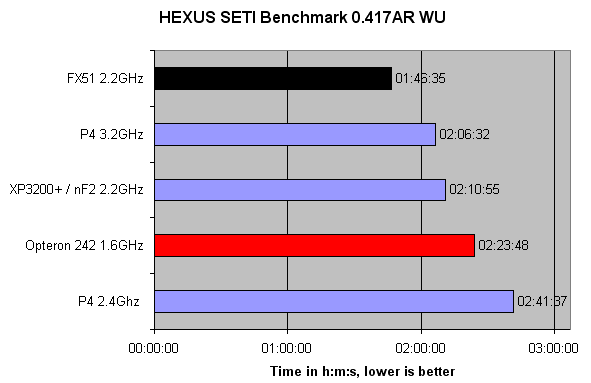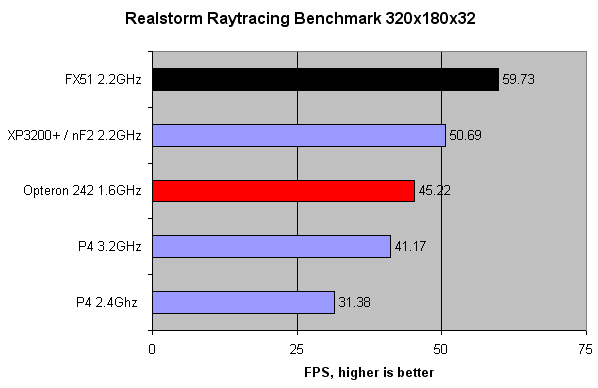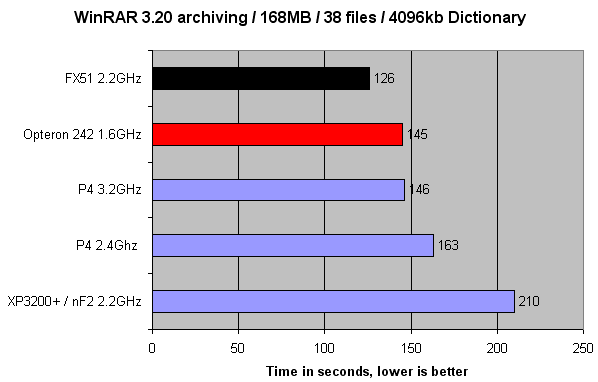Benchmarks II
If MP3 encoding stoutly refuses to benefit from the new core, SETI is an activity that's entirely the opposite. Loading the work unit into cache is a tremendous help to overall performance, and having on-die, low latency controllers will boost performance that much further.

1 hour, 46 minutes and 35 seconds is easily the fastest SETI time ever recorded at HEXUS. It takes a good 20 minutes out of a sleek and fast P4 3.2GHz setup and almost 25 minutes out of an equivalently clocked XP3200+ Barton. Here's where the FX-51 shines brightest. All of SETI's requirements for top performance are present in the K8-series design; large cache, fast DRAM access being just two of them. The 1.6GHz Opteron, too, isn't too far off the pace set by the XP3200+, and it soundly spanks the 2.4GHz Pentium 4 CPU. If ever there was a benchmark to showcase the talents of the Athlon64 FX-51, SETI would be it.

Realstorm's Raytracing benchmark shows impressive gains on the FX-51. Raytracing is a method of rendering stunning 3D graphics, and it puts all the burden on the CPU and memory subsystems, such that the graphics card becomes largely irrelevant. The Athlons' impressive FPU wins out here, and the FX-51 shows us how it's done.

File archiving is popular, and RARing, using WinRAR 3.20, is a well-used method. A directory consisting of 38 files, between 1k and 50.2MB and totalling 168MB was archived using the 'Best' option and a dictionary size of 4096kb. Where the XP3200+ does extremely poorly, the FX and Opteron do magnificently. It would be interesting to see this benchmark under a 64-bit OS/









